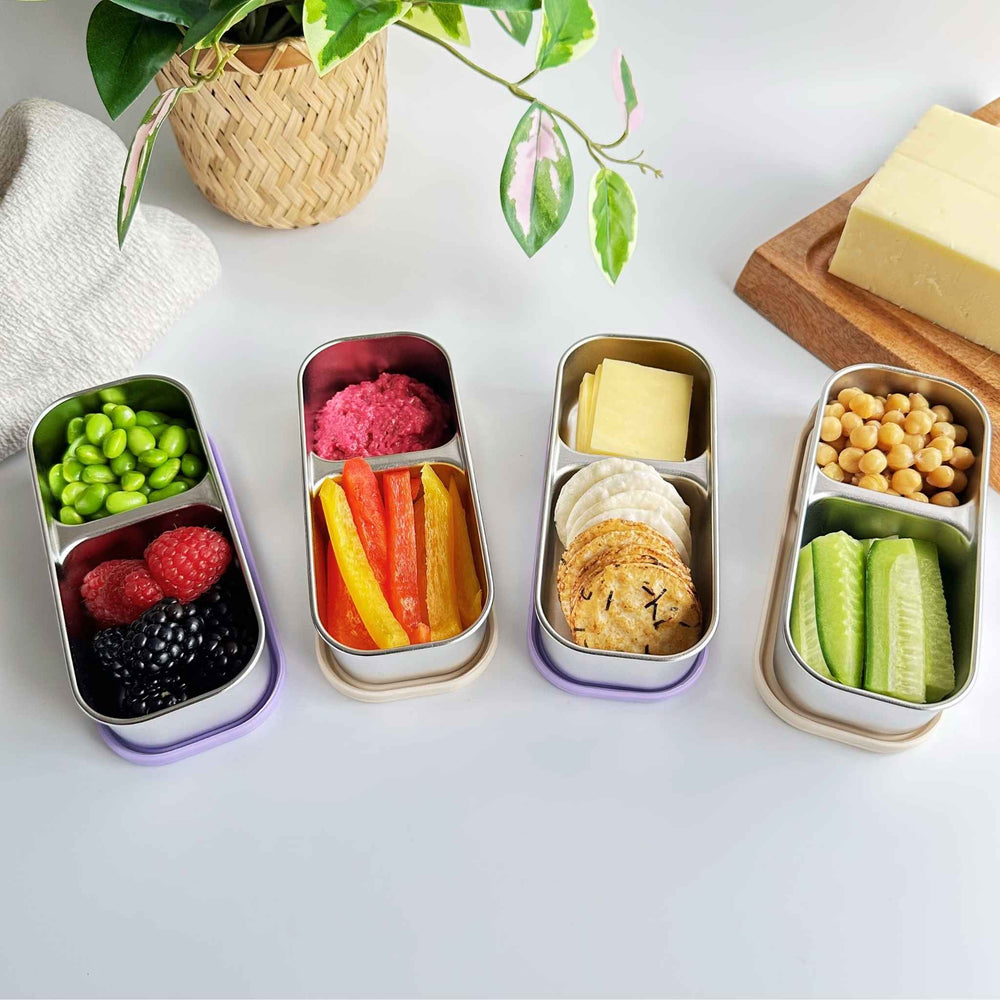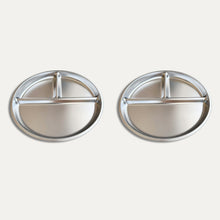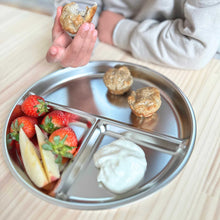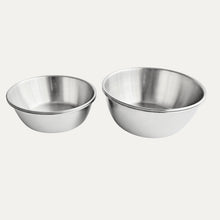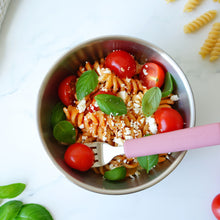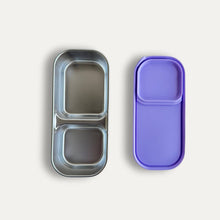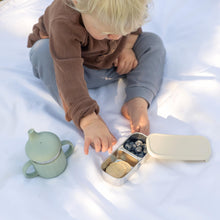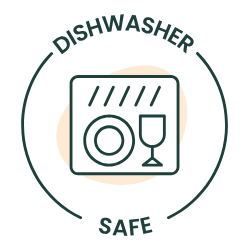The Unseen Diagnosis: A Deep Dive into Microplastics and Your Health
It’s the question every conscious parent is starting to ask: are everyday plastics harming my family’s health? Before we can find solutions, we must understand the problem. In Part 1 of our definitive guide, we dive deep into the hard science, separating fear from fact to reveal what microplastics are actually doing inside our bodies.

The Low-Plastic Life, Part 1: The Unseen Diagnosis—A Deep Dive into Microplastics and Your Health
It’s a thought that can stop you in your tracks. As you’re carefully washing your baby’s bottles or packing a healthy lunch for school, you wonder: am I unknowingly adding something harmful?
If you’ve felt that flicker of concern, you’re not alone. We’re all seeing the same headlines: microscopic plastics found in our blood, our lungs, and even in the human placenta. It feels overwhelming, and frankly, a bit scary to be honest. I’m not a scientist, but with a partner in the health field who spends days focused on digestive health, I was determined to get past the headlines and find real clarity. It led me down a rabbit hole of research seeking clarity amidst the noise. What are these particles, really? And what does the science actually say they are doing to our bodies, and to our kids?
Welcome to Part 1 of our definitive three-part series on navigating the age of plastics. This isn't about fear. It's about empowerment. We're going to sift through the science together, connecting the dots to understand the real story of microplastics and our health. In this deep dive, we’ll build a clear, evidence-based picture, setting us up for the practical, positive changes we’ll explore in Parts 2 and 3. Let's get informed, so we can get started.
Before we dive in, a quick but important note:
Disclaimer: The information in this article is for educational purposes only and is based on publicly available scientific research. It is not intended to be a substitute for professional medical advice, diagnosis, or treatment. Always seek the advice of your physician or other qualified health provider with any questions you may have regarding a medical condition.
In This Article (The 2-Minute Skim)
- What Are Microplastics? We break down the difference between micro- and nano-plastics and where they come from.
- The Body's Burden: How these particles can cross into our bloodstream and what they do once they're there.
- The "Trojan Horse" Effect: Why it's not just the plastic, but the toxic chemicals it carries, that matter.
- Who is Most Vulnerable? A look at the science explaining why children and those with sensitive systems are at greater risk.
-
The Global Verdict: What peak health bodies like the WHO and CSIRO are saying right now.
First, What Exactly Are We Talking About?
Before we go any further, let's get clear on the basics. You can’t fight an enemy you can’t see.
Imagine breaking a plastic toy or container. It shatters into smaller pieces. Now, imagine those pieces being ground down by sunlight, friction, and heat over decades. They never truly "disappear"; they just become smaller and smaller, creating a fine dust. That dust is made of microplastics.
- Microplastics: Scientists define these as plastic fragments smaller than 5 millimetres, about the size of a sesame seed.
- Nanoplastics: This is where it gets really concerning. These are particles a thousand times smaller, so tiny they are invisible to the naked eye and can operate on a cellular level. To picture it, if a microplastic is a grain of sand on a beach, a nanoplastic is a single speck of dust floating in a sunbeam.
Every single piece of plastic ever made, from the 2.6 million tonnes of plastic waste Australia produced in a single year to the synthetic fibres in our clothes, is slowly breaking down, creating these particles that now blanket our planet. And from the planet, they are finding their way into us.
So, where are the biggest points of contact in our daily lives?
Key Exposure Hotspots at Home
While the sources are countless, major daily exposure comes from:
- Our Drinks: From bottled water to tap water, drinks are a primary route for ingesting particles.
- Our Air & Dust: Research cited by FSANZ suggests that thousands of plastic particles from household dust—largely from furniture and synthetic textiles—can settle on a single meal.
- Our Food: Beyond seafood, plastics from packaging and processing are now a recognised source of contamination in many foods.
- Our Laundry: A single wash cycle of synthetic clothing can release millions of microfibres into the wastewater and the surrounding air.
The Body's Burden: A Journey Inside
For years, the assumption was that if we swallowed plastic, it would simply… pass through. But a wave of new research is painting a more complicated picture. The story isn't about what passes through; it's about what stays behind.
The main gateways are our mouths (ingestion) and our lungs (inhalation). A startling 2024 study supported by the US National Institutes of Health (NIH) found that a single litre of bottled water can contain, on average, 240,000 detectable plastic fragments, the vast majority being nanoplastics.
While larger particles are often trapped and expelled, the microscopic size of nanoplastics gives them an all-access pass to the body's inner sanctums. Think of your gut lining as a high-security checkpoint. It’s designed to let nutrients pass into the bloodstream while blocking toxins and invaders. Nanoplastics, however, are like master spies—so small they can slip through the cracks, passing from the gut into the bloodstream. A landmark 2022 study by researchers at Vrije Universiteit Amsterdam detected and quantified microplastics in human blood for the first time, confirming they can be absorbed into our circulation.
Once in circulation, the journey continues. Studies have now confirmed that these particles can cross critical biological barriers:
- The Blood-Brain Barrier: A fortress designed to protect our brain. Worryingly, emerging evidence synthesised in recent papers suggests that nanoplastics can breach these defences, raising concerns about their potential to impact brain health over time.
- The Placenta: This life-giving organ is also permeable. The discovery of microplastics in placental tissue confirms that a developing baby's exposure begins in the womb.
It’s a sobering reality: our body's most secure locations are being reached by these tiny synthetic invaders.
The "Trojan Horse" Effect: More Than Just Plastic
So, they’re inside us. But what are they actually doing?
Imagine your immune system as a vigilant home security system. It’s programmed to detect and neutralise intruders. When it detects a foreign particle—like a nanoplastic—it sounds the alarm. This alarm is inflammation.
A little inflammation is good; it’s how the body heals. But when the intruders are arriving constantly, every single day, the alarm never shuts off. This creates chronic, low-grade inflammation and oxidative stress—a process often described as "cellular rust." A recent study in the journal Frontiers in Immunology demonstrated that various microplastics, especially PET, impose a strong inflammatory response on human cells.
But that’s only half the story. The plastic particle itself is just the vehicle. It’s a ‘Trojan Horse’, carrying a hidden army of harmful chemicals:
- Chemicals in the plastic: Plastics are made with a cocktail of additives. Phthalates for flexibility, BPA for hardness, flame retardants, and UV stabilisers.
- Chemicals on the plastic: In the environment, microplastics act like sticky sponges, soaking up other pollutants.
Many of these chemicals are known endocrine disruptors, meaning they can scramble the body's delicate hormonal signals. It's this one-two punch—the physical irritation of the particle and the chemical disruption of its payload—that forms the basis of scientific concern.
An Unequal Burden: Why Our Kids Are More Vulnerable
As parents, our protective instincts are rightly heightened. And the science confirms this instinct: children, and those with sensitive systems, bear a greater risk.
Children are not just little adults. Their developing bodies and unique behaviours magnify their exposure:
- Pound for Pound (in Bear Grylls voice), Their Dose is Higher: They eat more food, drink more water, and breathe more air relative to their small body size.
- A System Under Construction: Their organs and immune systems are in a critical phase of development, making them more susceptible to disruption.
- The World Through Hands and Mouth: From crawling on carpets to mouthing toys, their environment delivers plastics far more directly. The Plastic Soup Foundation highlights research showing newborns and infants have higher concentrations of polyethylene terephthalate (PET) particles in their bodies than adults. This is powerfully illustrated by a groundbreaking 2020 study in Nature Food, which found that the standard preparation of formula in polypropylene baby bottles could expose infants to millions of microplastic particles per day. That statistic is a personal one for me. I can still vividly picture myself with our firstborn, either shaking formula in a plastic bottle or carefully defrosting breast milk from a plastic storage pouch. Doing what all the standard advice told us to do, long before we learned about this and made the switch.
For people with chronic inflammatory conditions, the presence of microplastics can be like pouring fuel on a fire. For example, a 2023 review in Frontiers in Public Health discussed how microplastic exposure could potentially exacerbate conditions like Inflammatory Bowel Disease (IBD) by promoting gut inflammation.
Practical next step: Trade plastic bottles for a stainless-steel sippy cup and swap plastic plates and bowls for unbreakable stainless-steel dinnerware. Ditch the chewy plastic spoon for a stainless-steel cutlery set, then give everything a once-over with our Product Care Guide—kid-proof, dishwasher-safe, and free from nasties at mealtime.
What Australia's Experts Say (and the Global Picture)
This isn't just online chatter; it's a serious topic of investigation for the world's peak health bodies. While no one is sounding a five-alarm fire just yet, they are all raising a flag of serious, unified concern.
- CSIRO (Australia's National Science Agency): A 2023 CSIRO-led study confirmed that plastics are "pervasive" in the Australian food supply. Lead author and food safety specialist Dr. Jordi Nelis put it plainly: “The key missing information is determining safe levels of microplastics. We currently don't know exactly what the microplastic flux through the food system is or which levels can be considered safe.”
- World Health Organisation (WHO): While their initial reports on drinking water deemed the risk low based on limited evidence, they have consistently called for urgent, expanded research, stating that more needs to be known about the health impacts of long-term exposure.
- Food Standards Australia New Zealand (FSANZ): FSANZ states that based on current evidence, the presence of microplastics in the food chain is "unlikely to result in immediate health risks to consumers." However, their guidance hinges on the crucial assumption that packaging materials are used correctly and don't contaminate food, something we know is challenged when plastics are heated or degraded.
The message is consistent: the evidence of widespread exposure is undeniable. While the full, long-term health consequences are still being uncovered, the prudent path is prevention.
Conclusion: From Diagnosis to Action
We’ve now seen the evidence. We have a clear picture of what these particles are, how they breach our body's defences, and the ways they can disrupt our health from a cellular level up, with our children being the most vulnerable.
This diagnosis is not a cause for panic. It is a call for empowerment. Now that we understand the 'why', we are perfectly positioned to tackle the 'how'.
Key Takeaways
Micro & nanoplastics are everywhere - water, air, food, even dust on your dinner plate.
They can cross gut, lung and placental barriers, with emerging evidence they breach the blood–brain barrier.
Kids cop a higher dose (body-weight ratio, hand-to-mouth habits, developing organs).
Top Aussie agencies (CSIRO, FSANZ) say long-term risks are still unclear, so prevention is the safest bet.
In Part 2 of our series, The Foundational Fixes, we will move from the science lab into our homes. We will roll up our sleeves and walk through the most practical, high-impact changes you can make to slash your family's plastic load and build a healthier future, starting today.
Stay tuned.
- Vee & The Greenvyne Crew 🌿
Image credit: © Kirill_grekov | Dreamstime.com
